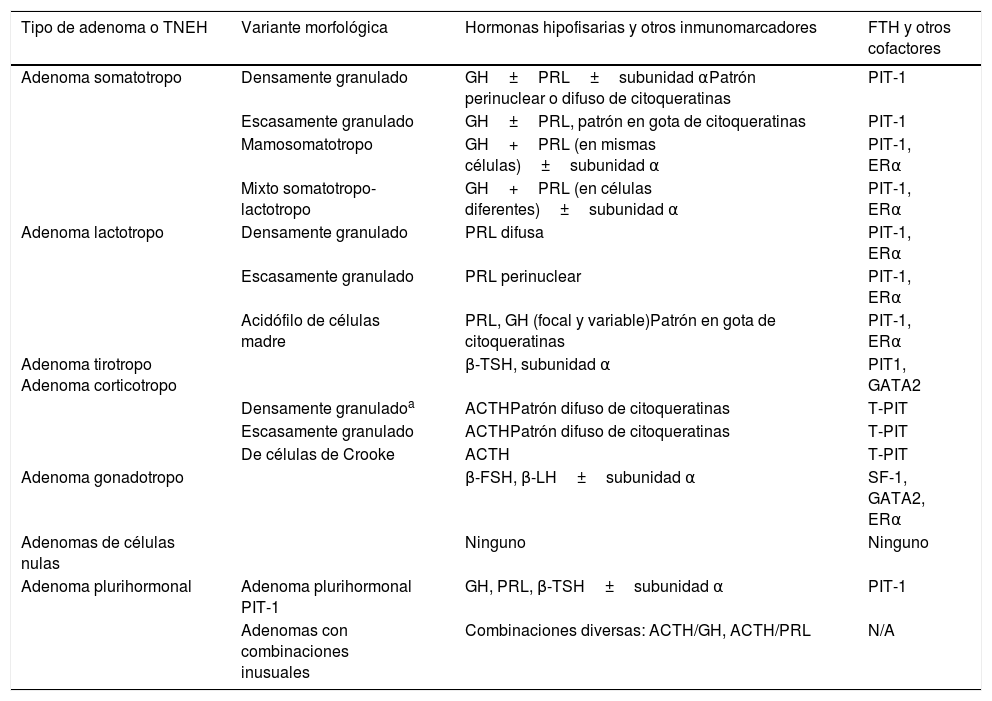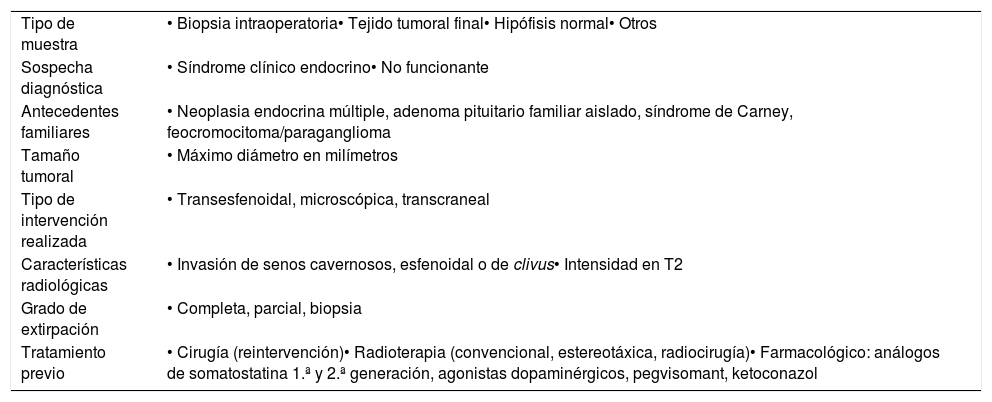Los tumores neuroendocrinos hipofisarios (TNEH) constituyen, junto con otros tumores de la región selar, un 15-25% de las neoplasias intracraneales. En 2017, la Organización Mundial de la Salud propuso una nueva clasificación de los TNEH. La principal innovación respecto a la clasificación del 2004 fue la recomendación de incluir en la evaluación inmunohistoquímica de los TNEH la determinación de los factores de transcripción de las 3 líneas celulares hipofisarias: Pit-1, Tpit y SF-1. Adicionalmente, se han propuesto otras clasificaciones clínico-patológicas con capacidad predictora del comportamiento tumoral durante el seguimiento. Ante estos cambios, procede adaptar el conocimiento generado durante los últimos 15 años a la práctica diaria del tratamiento y seguimiento de los TNEH en los centros de excelencia de patología hipofisaria. El presente documento recoge el posicionamiento de la Sociedad Española de Endocrinología y Nutrición (SEEN) y la Sociedad Española de Anatomía Patológica (SEAP) sobre la clasificación de los TNEH y la información que el patólogo debe proporcionar al clínico para facilitar el tratamiento y seguimiento de estos tumores.
Pituitary neuroendocrine tumors (PitNETs) constitute, together with other tumors of the sellar region, 15-25% of intracranial neoplasms. In 2017, the World Health Organization proposed a new classification of PitNETs. The main innovation with respect to the 2004 classification was the recommendation to include in the immunohistochemical evaluation of PitNETs the determination of the transcription factors of the 3 pituitary cell lineages: Pit-1, Tpit and SF-1. Additionally, other clinicopathological classifications with a predictive capacity of tumor behavior during follow-up were proposed. Given these changes, it is appropriate to adapt the knowledge generated during the last 15 years to the daily practice of the treatment and monitoring of PitNETs at the Centers of Excellence in Pituitary Pathology. This document includes the positioning of the Spanish Society of Endocrinology and Nutrition (SEEN) and the Spanish Society of Pathology (SEAP) on the classification and denomination of the PitNETs and the information that the pathologist should provide to the clinician to facilitate the treatment and monitoring of these tumors.













